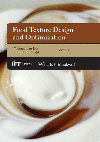The latest research on yogurt
Taking a look at popular high-protein protein products, plus much more.

Photo courtesy of fcafotodigital / iStock / Getty Images Plus

Why do we do research on yogurt or any other dairy product? Certainly, the yogurt companies have everything figured out when it comes to making good yogurt…
The reality is that yogurt manufacturers are always troubleshooting because making consistent yogurt on a daily basis is challenging. Sometimes, when you can’t solve a problem through product or process development, you need to do some research. Academic research allows us to do a deeper dive scientifically into a product that can help us to find out the “why” for complex dairy products like yogurt when we are optimizing a process or product and/or creating new products.
Dairy product research leads to innovation, but it also trains students who are seeking graduate degrees to learn the latest technologies. These M.S. and Ph.D. students will do research, graduate, and hopefully work for dairy companies or stay in academia to teach and do more research.
Not only will the dairy company gain the knowledge that the person has learned doing academic research, but they will also help the company innovate and stay competitive. If a Ph.D. candidate decides to stay in academia and starts their own research program, then the dairy research cycle can continue. Looking over the past five to 10 years of academic research on yogurt, there are a few areas of focus that provide great scientific support for the yogurt market today and in the future.
High-protein yogurts
Greek-style yogurts have been popular with consumers since they arrived in the U.S. market about 2007. Processes to achieve the high-protein content have included the use of Quark type separators and ultrafiltration membranes. High-protein dairy ingredients like milk and whey proteins have also been used to achieve the 8% and higher protein content that consumers are looking for. Research done at Cornell (2014) on spoonable Greek yogurt and UW-Madison (2022) on drinkable high protein yogurt evaluated the use of micellar casein in high protein yogurts.
It is much more difficult to make high-protein drinkable yogurts because many casein-containing ingredients contribute more structure and firmness. It was hypothesized that using a micellar casein, which has a low level of whey protein (~5-10% of the total protein), would provide a weaker gel structure to help make the product drinkable at 8% protein. Parameters evaluated for the drinkable yogurt included rheology, ionic strength, gel formation and strength, pectin addition, and process modifications. The researchers found that the ionic strength of the milk protein base had a major impact on the gel strength at pH 4.6 and gelation pH value.
Gelation and texture
Yogurt is an intricate gel made of caseins and whey proteins. Yogurt mixes are typically heat treated at high temperatures (85-95°C) to help create the desired gel structure and firmness after fermentation. Research to evaluate the impact of milk heat treatment and its impact on acid gelation was also done at the University of Wisconsin-Madison, Center for Dairy Research (2022) and funded by Dairy Farmers of Wisconsin and the National Dairy Council.
This research concluded that the formation of acid gels is the result of different types of weak intra and intermolecular casein interactions. Soluble denatured whey protein complexes associate with denatured whey proteins during the acidification of heated milk on the casein micelle surface, resulting in a single gelation phase that begins at a higher pH value compared with the unheated milk.
Another study conducted at Massey University in New Zealand (2021) looked at seasonal variations in milk composition and its impact on the gel structure of Greek yogurt, stirred, and set yogurts. A review paper published by Université Laval (2021) studied stirred yogurt microstructure and its correlation to physical properties.
There are other publications that evaluate added ingredients such as modified starches, whey proteins, milk proteins, and hydrocolloids and their impact on texture. This research is key to understanding the science of how yogurt gels form and change throughout their shelf life.
Culture evaluations
Bacterial cultures help to create different flavors and textures in yogurt. The cultures required in yogurt made in the U.S. are Streptococcus thermophilus and Lactobacillus bulgaricus. Different strain combinations of these cultures will produce different acidification rates, types of acids and flavor compounds, and even textural attributes, if they are exopolysaccharide (EPS) producing strains.
There are many types of lactic acid-producing strains that can produce EPS and there has been a lot of research published about them over the last 20-plus years. Probiotic strains of bacteria are often added for benefits to the microbiome, but some probiotics also contribute to the textural attributes of yogurt through production of EPS.
One collaborative study between three universities, UW-Madison, Instituto de Lactología Industrial (Argentina), and Istanbul Technical University (Turkey) researched the role of the probiotic strains Limosilactobacillus fermentum Lf2 (Lf2) and Bifidobacterium animalis INL1 (INL1) that produce EPS on the rheology and the release of bioactive peptides in yogurt. Their results showed that both probiotic strains increased the release of bioactive metabolites and impacted the levels of organic acids, carbohydrates, rheological properties and microstructure.
All of this research can be used to help product developers understand the complexity of the yogurt system and help them solve some of their development roadblocks. Innovation is critical to the success of our dairy product manufacturers and academic research is key to that success.
Looking for a reprint of this article?
From high-res PDFs to custom plaques, order your copy today!








